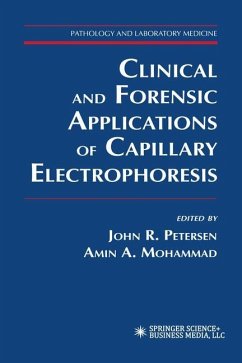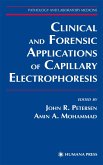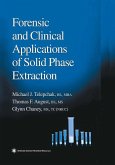Because capillary electrophoresis (CE) is driving the automation of manual and semi-manual techniques, conserves precious samples, and minimizes the use of hazardous organic chemicals, it constitutes a powerful new methodology for the clinical laboratory. In Clinical and Forensic Applications of Capillary Electrophoresis, John R. Petersen and Amin A. Mohammad, along with a panel of leading basic and clinical investigators, review those CE methods that are now replacing many routine serum and blood tests in clinical and forensic laboratories. Major areas reviewed include the coating of columns; the analysis of serum, urine, and CSF proteins and paraproteins; abnormal hemoglobins and hemoglobin Alc; peptides, amino and organic acids; therapeutic drugs; drugs of abuse; viral load; and short tandem repeats (STR). The methods discussed include capillary zone, micellar, electrokinetic, capillary gel, and nonaqueous electrophoresis. The authors show how a variety of detection methods (UV-visible, fluorescence, and MS) can be used in conjunction with CE to detect a broad array of analytes, ranging from serum proteins to PCR products to drugs of forensic importance.
Innovative and highly practical, Clinical and Forensic Applications of Capillary Electrophoresis demonstrates the power and versatility of CE-not only to develop new assays, but also to markedly simplify today's clinical and forensic laboratory methodology.
Innovative and highly practical, Clinical and Forensic Applications of Capillary Electrophoresis demonstrates the power and versatility of CE-not only to develop new assays, but also to markedly simplify today's clinical and forensic laboratory methodology.








